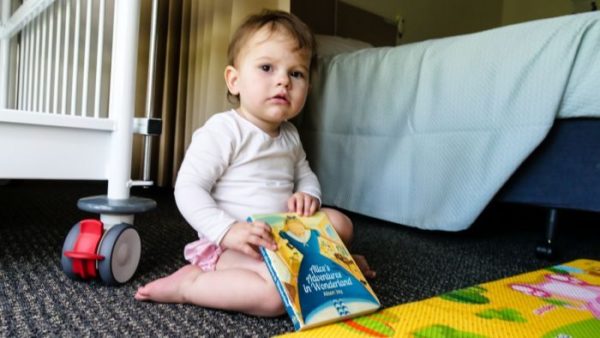
Tiny humans can be surprisingly difficult to get to sleep, and parents are often driven to the end of their wits just trying.
There is much debate online about which methods work best, and new studies can sometimes contribute to the confusion.
What works for one baby may not for another, and the same goes for the parents — but it’s not about the method so much as educating parents in what a baby’s brain needs, according to lactation consultant Alissa Powell.
“A baby needs to be safe, comfortable, warm and fed to be able to go to sleep,” Ms Powell said.
“But not just externally — the hormones in a baby’s brain needs to be feeling those things too.”
Ms Powell said parents may find an answer somewhere between the behaviourist approach, which is focussed on allowing a baby to cry, and attachment parenting, which requires a vigilant response to the baby’s cues.
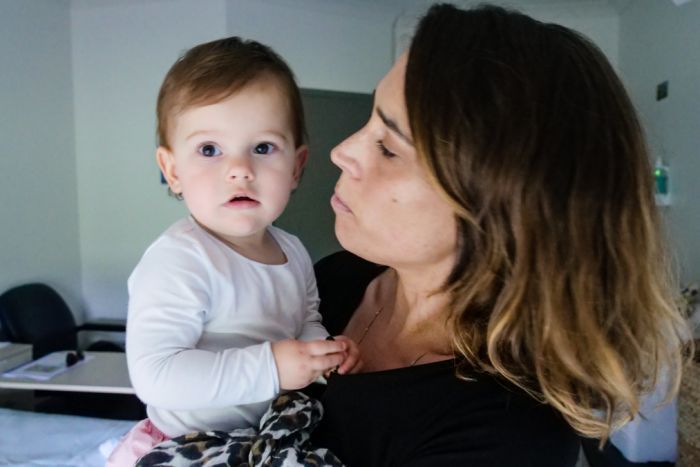 Photo: At 12 months Scarlett has had her fair share of all-nighters, driving her parents to distraction through accumulative sleep deprivation. (ABC Illawarra: Sarah Moss)
Photo: At 12 months Scarlett has had her fair share of all-nighters, driving her parents to distraction through accumulative sleep deprivation. (ABC Illawarra: Sarah Moss)Sleep training
Like many first-time parents, Emma Morris and her partner tried a variety of methods to encourage their daughter Scarlett to sleep.
For 12 months, they tried every trick in the book.
Exhausted and sick, they finally asked for help and learnt about a responsiveness-based sleep program that they said worked for them.
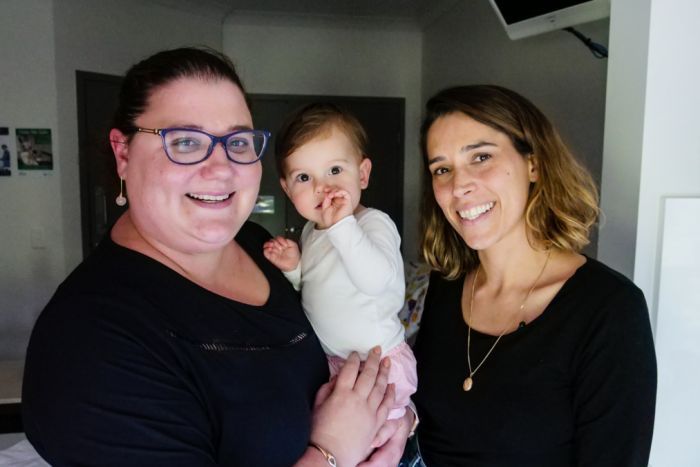 Photo: Claire Jauncey (left) helped Emma Morris learn how to read her daughter’s cues and trust her own instincts. (ABC Illawarra: Sarah Moss)
Photo: Claire Jauncey (left) helped Emma Morris learn how to read her daughter’s cues and trust her own instincts. (ABC Illawarra: Sarah Moss)“Boob worked well for us, but as life goes on, I was quite sick with mastitis,” Ms Morris said.
“The impact of that on my health, plus getting up through the night, combined with sleep deprivation, meant that it was really important for us to learn how to get her to sleep and teach her how to get to sleep in her cot.
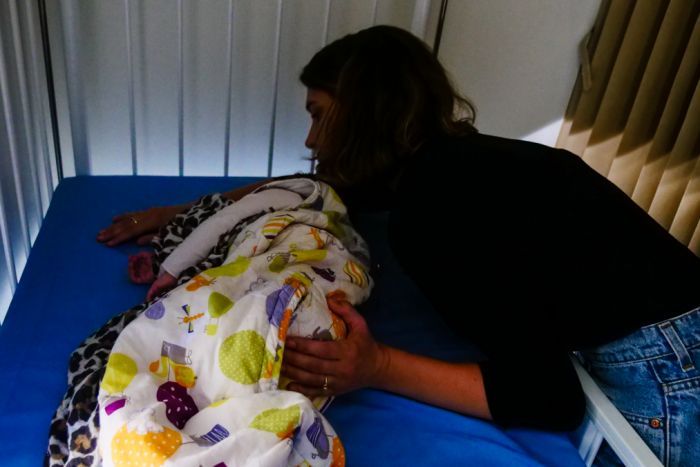 Photo: If the baby’s cry escalates the parent is there to help comfort them. (ABC Illawarra: Sarah Moss)
Photo: If the baby’s cry escalates the parent is there to help comfort them. (ABC Illawarra: Sarah Moss)“Your mum, Google and a friend will tell you three different things.”
Ms Morris sought professional help and took a week-long course with her baby at the Early Parenting Centre Nursing at Figtree Hospital, in regional New South Wales.
“What worked for us was actually learning about Scarlett by watching her and understanding when she’s getting tired,” Ms Morris said.
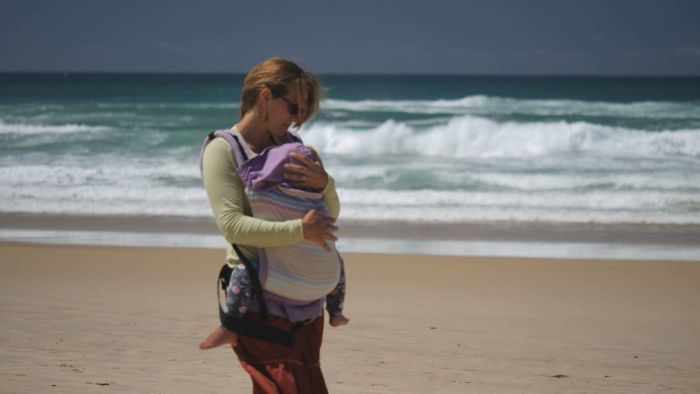 Video: Baby wearing, using a carrier, wrap carrier or sling, can positively impact lifelong heath for the child (ABC News)
Video: Baby wearing, using a carrier, wrap carrier or sling, can positively impact lifelong heath for the child (ABC News)Holding on
Nurse Claire Jauncey, who worked with Ms Morris at the parenting centre, said droning music, a white noise generator, or radio with no sudden loud sounds, can help put children to sleep.
“White noise becomes a predictability for a bub so if they hear that noise they know that mum or dad is trying to put them to sleep,” Ms Jauncey said.
“It also drowns out all that outside noise.”
Ms Jauncey said it is important to create positive sleep associations, using such methods as a pacifier, wrapping and patting or stroking.
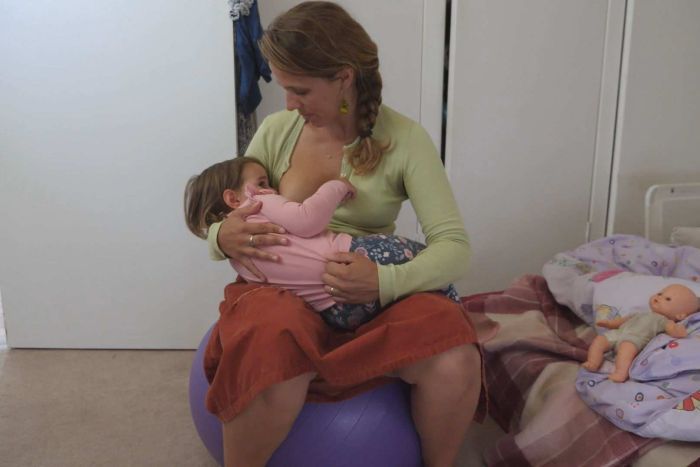 Photo: Maria Coen sings her daughter lullabies while bouncing on a fit ball. (ABC Mid North Coast: Wiriya Sati)
Photo: Maria Coen sings her daughter lullabies while bouncing on a fit ball. (ABC Mid North Coast: Wiriya Sati)Maria Coen said she loved putting her children, who are now two and six, to sleep.
“We were mainly in the carriers and the wraps from the start,” she said.
“She goes to sleep holding my nipple in her mouth, usually drinking or just comforting herself.
“I was taking her for long walks in the carrier … the movement and rocking while singing to her was helping her go to sleep.”
Ms Coen uses a fit ball to bounce gently while holding her baby in her arms.
Ms Powell said there was a large body of research that suggested baby wearing, where the carer wears the baby close to the body using a carrier or sling, had a positive effect on the child’s breathing, heart, thyroid, glucose levels and insulin.
“Especially in young infants in their fourth trimester, where they’re finishing their gestation outside of the womb, it’s very important,” she said.
“Baby wearing can positively impact lifelong health and brain development, and the implications for that are absolutely huge.”
Topics: family-and-children, family, healthy-living, childrens-health, community-and-society, figtree-2525, port-macquarie-2444